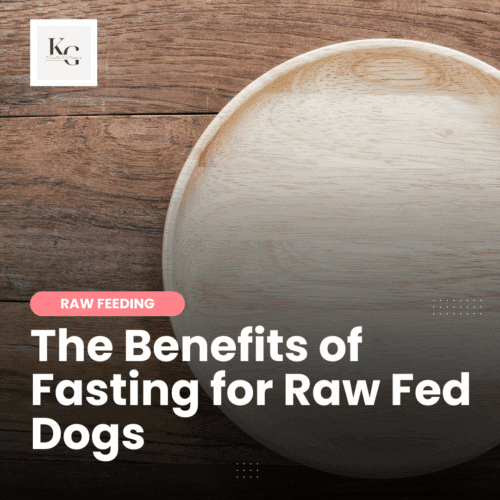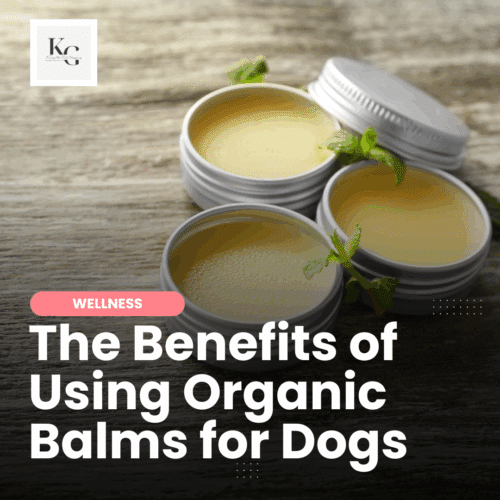Keep the Tail Wagging is supported by pet parents. I occasionally earn a commission (at no additional cost to you) when you click through an affiliate link to one of my favorite products. Thank you for your support. Read More
As an experienced raw feeder, I know firsthand the worry that hits when your usually enthusiastic dog suddenly refuses their raw meal. You’ve sourced the best meats, balanced the diet carefully, and followed all the guidelines — so why are they turning up their nose? A dog won't eat occasionally, which may not be a big deal. Still, when you're typically voracious dog walks away from a seemingly delicious meal, it can be frustrating, confusing, and worrying.
Let me explain the common reasons why raw fed dogs sometimes refuse to eat and offer practical solutions to help them get back on track.
1 – Boredom with the Same Meal Every Day
Why does it happen?
Dogs, like people, can get bored with eating the same thing repeatedly. Even though raw feeding offers variety across proteins, many owners fall into the habit of giving their dogs the same meal daily. This can be due to sourcing, budget, or convenience.
What to do:
- Rotate proteins: Offer a mix of chicken, beef, duck, turkey, lamb, pork, rabbit, venison, fish, etc.
- Vary organ and bone choices: Switch between different types (e.g., duck necks vs. duck wings, beef liver vs. lamb liver).
- Add fun toppers: Sprinkle freeze-dried treats, a raw quail egg, or fermented fish stock.
2 – Food Is Too Cold
Why does it happen?
Some dogs dislike the sensation of icy food straight from the fridge. It can also cause digestive upset, regurgitation, cramping, poor nutrient absorption, and bloating. Traditional Chinese Medicine (TCM) discourages eating cold or icy foods because they are believed to disrupt the natural balance of Qi (vital energy) and impair the function of the digestive system, specifically the Spleen and Stomach, which are central to digestion and energy production in TCM theory.
Health risks:
Eating very cold meals can slow digestion, cause vomiting, or make a dog more prone to stomach discomfort.
What to do:
- Bring food to room temperature: Let raw meals sit out for 15–30 minutes (but no longer than an hour for safety).
- Gently warm using a water bath: Place the raw food container in warm water; I never ever microwave, as this impacts the nutrients, hardens the raw bones, unevenly warms the food (creating hot spots), and oxidizes any fats in the meal.
- Use warm bone broth: Pour a bit of warmed (not hot) bone broth over the meal to remove the chill; if you don't have bone broth, you can use water.
3 – Upset Tummy or Nausea
Why does it happen?
If your dog’s stomach is unsettled, they may instinctively avoid food. This can be due to dietary changes, eating something they shouldn’t have, mild illness, or stress.
What to do:
- Check for other symptoms: Look for vomiting, diarrhea, lethargy, or excessive drooling.
- Offer a light, bland meal: If they're willing, you can try plain cooked pumpkin, slippery elm broth, or even a small portion of bland raw protein (like ground turkey).
- Monitor closely: See your vet if symptoms persist more than 24–48 hours or worsen.
4 – Oral Pain or Broken Tooth
Why does it happen?
Chewing raw meaty bones can sometimes chip or break a tooth, making eating painful. Gum infections or other dental issues can also make chewing difficult.
What to do:
- Inspect the mouth: Carefully check for broken teeth, red or swollen gums, or visible injuries.
- Switch to soft food: Temporarily remove hard bones and offer ground or minced raw meals.
- Consult your vet: Dental pain often needs professional care to prevent further complications.
5 – Overfeeding or Lack of Hunger
Why does it happen?
Sometimes we overestimate how much food our dogs need. They might not be hungry if they’ve been overfed or had lots of treats and chews.
What to do:
- Assess portions: Make sure you’re feeding appropriate daily amounts (typically 2–3% of adult body weight, adjusted for activity).
- Reduce extra treats: Cut back on in-between snacks and chews.
- Skip a meal: It’s okay to let them skip one meal — healthy adult dogs can safely fast for 12–24 hours.
6 – Environmental Stress or Distraction
Why does it happen?
A noisy, chaotic environment or recent changes (like a new pet, visitors, or loud remodeling) can make dogs anxious and affect their appetite.
What to do:
- Feed in a quiet, calm area: Create a peaceful space where your dog can eat undisturbed.
- Keep a routine: Dogs thrive on predictable feeding times and rituals.
- Offer reassurance: Calm, gentle encouragement without pressure can help.
7 – Hormonal or Life Stage Changes
Why does it happen?
Unspayed females in heat, pregnant or nursing dogs, or older senior dogs may experience fluctuating appetites.
What to do:
- Adjust meals based on needs: Pregnant and nursing dogs need more calories, while seniors may need less or a different ratio of nutrients (I like to feed my senior dogs more protein).
- Monitor closely: If the appetite drop seems sudden or concerning, check in with your vet.
8 – Health Conditions or Underlying Illness
Why does it happen?
Persistent appetite loss can signal something deeper, such as kidney disease, liver problems, infections, or metabolic disorders.
What to do:
- Don’t wait too long: If your dog refuses food for more than 24–48 hours, especially if it is paired with other symptoms (vomiting, diarrhea, lethargy, weight loss), seek veterinary attention.
- Keep detailed notes: Track when they stopped eating, any changes in behavior, and other physical symptoms to share with your vet.
Summary Table: Reasons & Solutions
| Reason | Solution |
|---|---|
| Boredom | Rotate proteins, add toppers |
| Food too cold | Bring to room temp, gently warm, add bone broth |
| Upset tummy | Bring to room temp, gently warm, and add bone broth |
| Oral pain / broken tooth | Check mouth, switch to soft foods, see vet |
| Overfeeding / not hungry | Adjust the feeding plan, monitor, and call your vet if concerned |
| Stress / distractions | Reduce portions, skip a meal if needed |
| Hormonal or life stage changes | Adjust the feeding plan, monitor, and call your vet if concerned |
| Underlying illness | Watch for other symptoms, vet if more than 24–48 hours of refusal |
When My Dogs Won't Eat
One of my dogs will rarely turn down a meal. I've been fortunate that I haven't had picky dogs. On the few occasions a dog refused a meal, it was because something was missing or the food was too cold. Sydney used to love green beans in her meals, and she would sit next to her bowl and wait for them to be added. Scout would do the same. My senior dogs weren't fans of very cold (straight from the fridge) foods, other than frozen treats on hot summer days.
- I add warmed bone broth to my dogs' meals daily.
- When feeding meals of raw goat's milk, I let the milk sit out for 20 minutes before feeding it.
- I use meal toppers from Real Dog Box, Northwest Naturals, or homemade (save the crumbs from dog treat bags).
Raw feeding is an incredible way to nourish your dog, but it’s not immune to hiccups like any diet. By understanding the potential reasons behind a sudden refusal to eat, you can take smart, proactive steps to keep your dog healthy, happy, and excited about their meals.
If you ever feel uncertain or if your dog’s behavior seems unusual, don’t hesitate to consult your holistic vet or raw feeding consultant for personalized guidance.





